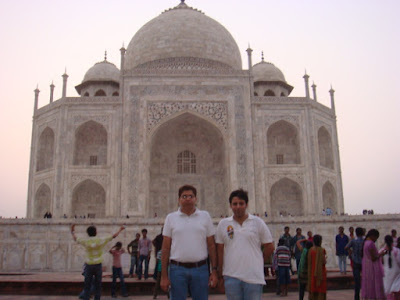The
Fourth Wave
In the recently
concluded World Economic Forum (WEF) at Davos, Switzerland, the discussions
were about the Fourth Industrial revolution, among many other vital issues, that
is about to begin which would alter the way we live, transact and coomunicate.
WEF, a membership forum, as a mission engages the foremost political, business
and other leaders of society to shape global, regional and industry agendas. And
is committed to improving the state of the world thru Public-Private
cooperation. A real think tank to take stock of the achievements and guide the
contours of future endeavours for improving the life in general.
Let us recapitulate
the three Industrial revolutions before attempting to grasp the fourth one. Till
the second half of the 18th century, man had been deploying his
muscle power aided by animals - horses, elephants and donkeys either to build
mammoth monuments, like the Pyramids or Taj Mahal to the simple tasks of
carrying material or for excavating the earth for coal or minerals. In 1784, a Scottish
mechanical engineer, James Watt invented and perfected the manufacturing of steam
engine heralding First Industrial revolution. It lead to ease of transportation
of both men and material and efficiently replacing the human labour in the
factories. The miracle machine had greatly
enhanced Production and productivity and
brought many comforts to society. The Tractor running on a stream engine
replaced horses, improved harvest cycle, and agricultural output. Textile
factories produced better quality fabrics.
Until the onset of
steam engine, the textile factories were built near the waterfalls to garner
the kinetic energy of the falling water to run the “Water Wheels”, connected to
the machines. It imposed restrictions on the location and Watt’s invention
moved the factories to the cities close to the availability of skilled
workforce, improving the overall performance. Besides, it freed the Cotton
industry from the vagaries of Nature.
Though the first Industrial revolution claimed colossal achievements,
the real winner, in the words of James Watt “we can conquer the nature, if we
can but find her weak side”; thus, man began conquering the Nature.
In the ensuing
decades, the invention of electricity, with sociological changes - democracies
replacing oligarchies and evolving of organised labour paved way for, sometime
in 1870, the Second wave of the industrial revolution. Further inventions in electronics,
aviation and communications accelerated industrial growth leading to mass
production of automobiles and consumer items to keep pace with growing desires
and demands of the society.
While the first
industrial revolution is about mechanization, the second wave is about
consolidation and enrichment by further inventions. However, the speed and
time, two components still remained a puzzle for man in winning over nature. That
incessant desire lead to the inventions of computers and networking them on one
highway with internet sowed the seeds for third wave of the Industrial
revolution in 1969.
The powerful
microprocessor produced high-speed computation and evolved industrial
automation to a higher degree with safety and fault-tolerance as standard
features, besides improving the productivity. The launching of Geo-stationary
satellites with advanced communications technologies gave a handle to
understand and monitor Nature’s most wavering aspect – the weather. It also opened a window to widen our comprehension
on the origins of the universe through space travel. The third wave helped us to
master and unravel the human anatomy aiding us to stretch the longevity and
quality of life .While first two waves allowed us to conquer space, the third
wave allowed us to access to the fourth dimension, the time. It made us to be
present in more than one location at the same time thru video streaming,
bestowing us an Omni-potency to a greater degree- a step closure to conquering
the Nature.
Coming back to the Fourth
wave, as predicted, it will be the Digital Revolution. It is about Artificial
Intelligence, Robotics and Industrial Internet of things. Robots will be
deployed for clearing nuclear waste or treating patients afflicted
with contagious dieses; Vehicles will communicate with each other (V2V) for
safety and communicate with Infrastructure (V2I) to manage around traffic
signals for fuel efficiency. The health of people will be monitored on a continuous
basis and predicting the need to visit Hospital. Wearable devices will take us to
“augmented reality”; we will be where we want to be, of course on virtual
world. Having mastered Space and time, we will be conquering “Reality” by
designing it to our wish. Perhaps, we will, soon be living out of a Sci-fi
movie as detailed out.
Nevertheless, we collectively committed a
crime while enjoying the benefits of the three waves of industrialization - the
assault on climate, making the mother earth feverish. In our pursuit of good
life in the fourth wave, we need to redeem that sin consciously. Let us welcome
“The Forth wave – the Digital Disruption”.
-----------------------









